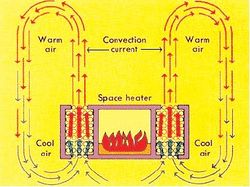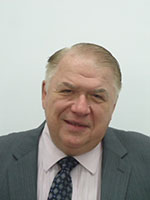Difference between revisions of "Main Page Beta"
| (4 intermediate revisions by the same user not shown) | |||
| Line 6: | Line 6: | ||
<div style="margin: 0.2em 10px 10px;"> | <div style="margin: 0.2em 10px 10px;"> | ||
[[File: | [[File:Logo_Full_Purple.png|left|x80px|caption]] <!-- EG logo Placeholder --> | ||
</div> | </div> | ||
| Line 33: | Line 33: | ||
</div> | </div> | ||
{| role="presentation" style="border: | {| role="presentation" style="border: 0px solid #aaaaaa; margin: 0;" width="100%"; cellspacing="10" <!-- Content Boxes --> | ||
| valign="top" style="background: #ffffff; border: 1px solid #aaaaaa;" width="50%"; rowspan="2" colspan="2"| | | valign="top" style="background: #ffffff; border: 1px solid #aaaaaa;" width="50%"; rowspan="2" colspan="2"| | ||
<div style="background: #f9f9f9; border: 0px solid #aaaaaa; margin-bottom: 10px; padding:1.2em 0.4em; text-align: center; font-size: 125%"> | <div style="background: #f9f9f9; border: 0px solid #aaaaaa; margin-bottom: 10px; padding:1.2em 0.4em; text-align: center; font-size: 125%"> | ||
| Line 83: | Line 83: | ||
<div style="background: #f9f9f9; border: 0px solid #aaaaaa; margin-bottom: 10px; padding:1.2em 0.4em; text-align: center; font-size: 125%"> | <div style="background: #f9f9f9; border: 0px solid #aaaaaa; margin-bottom: 10px; padding:1.2em 0.4em; text-align: center; font-size: 125%"> | ||
<b>Lecture of the Week</b></div> | <b>Lecture of the Week</b></div> | ||
[[File:Lecture_Georgi.jpg|right|120px|frame|Professor Gunter Georgi]] <!-- Lecturer Image, Caption and blurb --> | |||
<div style="margin: 0.2em 10px 10px; vertical-align:middle"> | |||
<p style="vertical-align: middle"> Gunter Georgi, current Director of the General Engineering Program, will be presenting about aerospace engineering and his experiences | |||
working for Northrop Grumman. The presentation will review a brief history of NASA's manned space program beginning with Mercury. The focus of the | |||
presentation is on the process and design work put into the Apollo missions as well as the complete mission profiles and a look at | |||
the technology used.</p> | |||
</div> | </div> | ||
|- | |- | ||
| Line 108: | Line 112: | ||
<p><b>Deadlines</b></p> | <p><b>Deadlines</b></p> | ||
<ul> | <ul> | ||
<li>Milestone 1 () | <li>Milestone 1 (Week) | ||
<li>Milestone 2 () | <li>Milestone 2 (Week) | ||
<li>Milestone 3 () | <li>Milestone 3 (Week) | ||
<li>SLDP Early Submission (4/18-4/22) | <li>SLDP Early Submission (4/18-4/22) | ||
<li>SLDP Standard Submission (4/25-4/29) | <li>SLDP Standard Submission (4/25-4/29) | ||
| Line 125: | Line 129: | ||
<b>Engineering in the News</b></div> | <b>Engineering in the News</b></div> | ||
<div style="margin: 0.2em 10px 10px"> | <div style="margin: 0.2em 10px 10px"> | ||
<p> | {| role="presentation" style="border: 0px solid #aaaaaa; margin: auto;" width="100%" cellspacing="10" | ||
| valign="top" | | |||
<p align="left"><b>[http://phys.org/news/2016-04-einstein-theory-relativity-satellite.html#jCp Einstein's theory of relativity faces satellite test]</b></p> | |||
<p>Einstein's theory of general relativity is to be put to the test by a newly launched satellite in an | |||
experiment that could upend our understanding of physics. The French "Microscope" orbiter will try to poke a hole in one of | |||
Einstein's most famous theories, which provides the basis for our modern understanding of gravity. Scientists will use the | |||
kit to measure how two different pieces of metal—one titanium and the other a platinum-rhodium alloy—behave in orbit.</p> | |||
| valign="top" | | |||
<p align="left"><b>[http://techcrunch.com/2016/04/24/nasa-launches-new-x-plane-program-to-create-cleaner-more-efficient-planes/ NASA launches new X-plane program to create cleaner, more efficient planes]</b></p> | |||
<p>NASA has announced the launch of the “New Aviation Horizons” initiative, which will lead to a new generation of X-planes that | |||
are fueled by greener energy, use half the fuel, and are half as loud as commercial aircraft in use today. A 10-year initiative, | |||
New Aviation Horizons is a reminder of the importance of the first “A” in NASA. Through a series of research and development | |||
investments, NASA hopes to identify new technologies that can push the commercial aviation industry forward.</p> | |||
|} | |||
</div> | </div> | ||
|} | |} | ||
Latest revision as of 01:36, 28 April 2016
|
Objective: The experimental objective of this lab is to design and build a container that minimizes the heat lost by an egg placed inside. The heat loss will be measured by recording the temperature of the surface of the egg. Furthermore, you will learn about heat as a form of energy (thermal energy) and how it is transferred. We will also investigate the principles of minimal design. Your design will be entered in a competition against the other containers in your section. The team with the lowest Minimal Design Ratio (MDR) will be declared the winner. Just-in-time Review: Important equations Heat transferred through convection: Heat transferred through radiation:
Minimal Design Ratio:
|
Lecture of the Week
Gunter Georgi, current Director of the General Engineering Program, will be presenting about aerospace engineering and his experiences working for Northrop Grumman. The presentation will review a brief history of NASA's manned space program beginning with Mercury. The focus of the presentation is on the process and design work put into the Apollo missions as well as the complete mission profiles and a look at the technology used. | |||||||
|
Featured SLDP
In 2007, meteor Billy1987 collided with the International Space Station (ISS). The ISS orbits the moon and is a research facility assembled in space and formed among the space agencies of the US, Russia, Japan, Canada and eleven European countries. During the collision, several pieces of the ISS landed on the Moon, including "Zarya", the power supply module. NASA has issued an RFP for the development of a cost-effective autonomous robot that will retrieve Zarya. The robot should be compact in size in order to fit into the space shuttle. It will be released from the shuttle, land on the moon, traverse through the debris, retrieve Zarya, and return back to its landing site where it will take off back to the space shuttle. | ||||||||
|
Important Deadlines/Policies
Deadlines
Policies |
Engineering in the News
| |||||||






